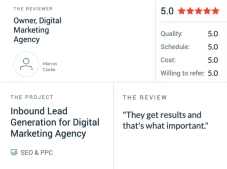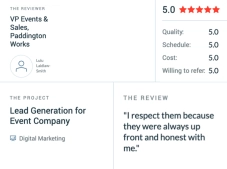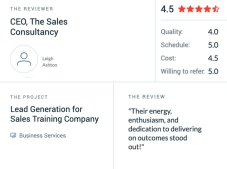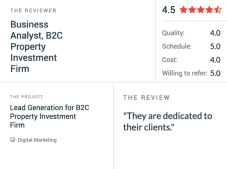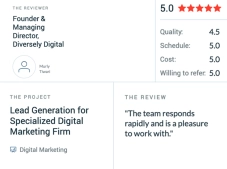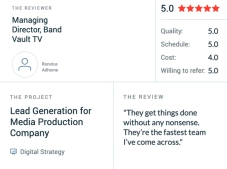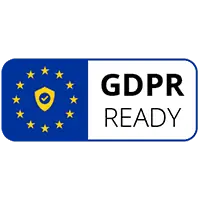A Complete Guide To Email Marketing: Set Up, Execute, And Measure Your Campaigns
Email marketing is one of the most effective ways to connect with your customers and gather feedback. With the right set-up, execution, and measurement, you can create powerful and enduring campaigns.
This ultimate guide walks you through everything you need to know to get started with email marketing.
4 Benefits Of Email Marketing
Email marketing is one of the most powerful communication tools available. Here are four benefits you can expect to reap from using this marketing strategy:
Increase Brand Awareness
One of the biggest benefits of email marketing is that it can increase brand awareness for your business. With more and more people using email to stay connected, businesses can reach a much larger audience simultaneously.
When you send an email campaign, you can showcase your brand’s personality and values through your messaging and design. This helps create a lasting impression on subscribers, who are more likely to remember and recognise your brand in future interactions. As a result, they may be more inclined to engage with or purchase from your business.
Generate Website Traffic
Email marketing is one of the most effective forms of digital marketing that businesses can utilise to drive website traffic. One of the main benefits of email marketing is its ability to reach a wide audience with personalised messages.
With email, businesses can segment their audience and send targeted messages based on their interests, behaviours, and preferences.
Furthermore, by including links within emails that direct readers back to a company’s website or landing pages, businesses can easily track how many people visit their site from this campaign. This allows them to measure the email marketing success of their efforts and make data-driven decisions about optimising future campaigns for even greater results.
Boost Other Marketing Channels
One of the significant advantages of email marketing is that it can boost other marketing channels a business may use. Email campaigns can work with other advertising methods to generate more leads, sales, and revenue.
For instance, if you’re running a social media campaign to monitor and promote your brand on different platforms like Facebook or Twitter, you can use email to reinforce or remind users about your brand’s presence on those channels.
By creating targeted emails with links to your social media pages, you can encourage subscribers to follow you on social media or share your content with their network. This will help increase engagement levels and drive traffic back to your website.
Keep Customers Engaged
The last key benefit of email marketing is keeping customers engaged. Email marketing can increase customer loyalty, drive sales, and promote brand awareness when done correctly.
One way to keep the existing customer engaged through email marketing is by providing them with valuable and relevant content. This could include exclusive offers, discounts, or promotional emails only available to subscribers.
By keeping your content fresh and engaging, you can encourage customers to stay subscribed and even share your emails with others.
Steps On How To Do Email Marketing
You need to take a few key steps to get started with email marketing, including setting up an email address, designing your message, and creating effective content. By following these simple steps, you can create powerful email campaigns that will help you connect with your potential customer and build relationships.
Choose An Email Marketing Service
Email marketing is one of the most effective ways to reach and engage your target audience. However, sending emails manually can be time-consuming and ineffective.
That’s why choosing an email marketing service can make a huge difference in the email marketing success of your campaigns. Choosing the right one for your business can be overwhelming with so many options.
When selecting an email marketing service, consider pricing, features, ease of use, and customer support. Some popular options include Mailchimp, Constant Contact, and AWeber. These services offer various templates for creating visually appealing, mobile-friendly, responsive emails on different devices.
Implement Email Segmentation
Email segmentation involves dividing your email list into smaller groups based on specific criteria such as demographics, behaviour, or interests. By doing this, you can create more targeted and personalised email campaigns tailored to each group’s unique needs and preferences.
For example, you could segment your list by location and send targeted promotional emails to potential customers in certain geographic areas. Or you could segment by purchase history and send recommendations for products that complement previous purchases.
The possibilities are endless regarding email segmentation, but the benefits are clear: increased engagement, higher open rates, and ultimately more conversions.
Personalise Your Email Marketing
Personalisation involves tailoring your messages and content to suit individual recipients based on their interests and preferences. This means going beyond simply addressing them by name – although that’s certainly a good place to start!
Instead, it requires analysing purchase history, website activity and social media engagement to create targeted and relevant content. It also helps build stronger relationships between businesses and customers by showing that you understand their needs and are willing to go above and beyond.
Incorporate Email Marketing Automation
Incorporating email marketing automation into your marketing strategy helps you manage your email marketing campaign simultaneously while giving you better insights into your audience’s behaviour. With automated email, you can set up trigger-based transactional emails that are sent automatically based on specific actions by your recipients.
You can also segment your list and personalise transactional emails for different groups of subscribers. Using automated email makes sending targeted messages easier and more efficient while allowing for greater personalisation to improve customer engagement rates.
Use Email Marketing Templates
Creating email messages from scratch can be daunting for many business owners. This is where marketing email templates come in handy, providing a starting point that can be customised to fit specific business needs.
One main advantage of email marketing templates is saving time and effort in designing an email campaign monitor. With pre-designed layouts and themes, all you have to do is add your content and branding elements, such as logos or colours, resulting in a professional-looking email message without the need for graphic design skills.
Conclusion
Email marketing is a powerful way to reach your target market and drive sales. You can use several email marketing tools to create and execute your campaign.
It is important to know how to set up your campaigns, measure their success, and adjust your email marketing strategy as needed. These tips can create successful email marketing campaigns to help grow your business.
Was this article helpful? Let us know in the comments.
FAQ
What time of day is best to send an email?
The best time to email varies depending on your target audience and industry. For example, if you’re targeting professionals, consider sending emails during work hours between 9 am-5 pm on weekdays. On the other hand, if your target audience is stay-at-home parents or retirees, consider sending emails during leisure hours like early mornings or evenings.
Do I need to pay for email marketing?
The truth is that while free marketing email platforms are available, paid email marketing services offer more features and better functionality. For example, paid platforms provide advanced email marketing tools like drip campaigns and lead nurturing workflows that help you create personalised messages for your audience.
How do I get clients for email marketing?
Another way to attract new email subscribers is through partnerships with other businesses or influencers in your industry. By teaming up and promoting each other’s products or services, you can reach a wider audience and gain credibility within the community.








